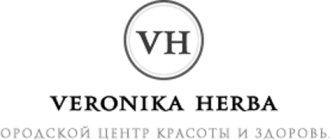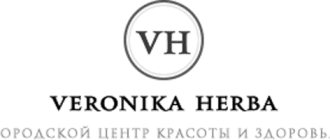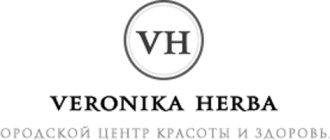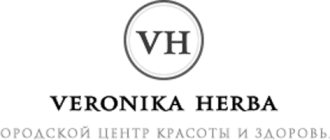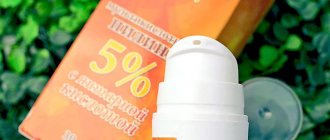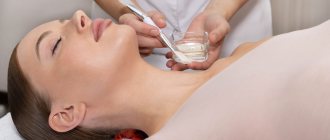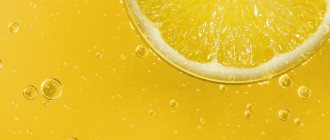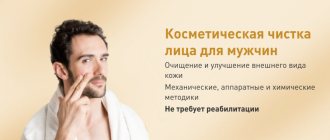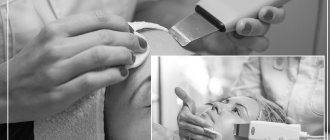The skin is constantly renewed. In adolescence, this cycle takes approximately 28 days. With age, this period increases due to the slowing down of the metabolic process in cells. Age-related changes appear on the face in the form of wrinkles and age spots. To prevent aging, combat wrinkles, dryness and pigmentation, and maintain skin tone, chemical peeling is used.
However, it is relevant not only in adulthood; it will help young skin get rid of oiliness and acne.
What is the difference: home peeling and peeling at a cosmetologist
Peels that can be used at home do not penetrate deeply into the skin and give an unnoticeable result, but they certainly help maintain an even tone and healthy skin. Chemical peels performed by estheticians have a lower pH level than at-home peels, so they can penetrate much deeper into the skin and target skin problems such as hyperpigmentation and acne. Chemical peels can cause redness of the skin; a recovery period will last for several days, during which the “old” skin will gradually peel off and renewed skin will appear.
Mechanical
In cosmetology, hardware resurfacing is used to even out the tone and structure of the skin after getting rid of acne and acne. Mechanical peeling gives good results in the fight against age-related changes.
For the technique, special products are used that contain abrasive microparticles and granules. They sand away dead cells like an eraser. After the procedure, lymph outflow occurs much faster.
How to determine what type of peeling you need
The decision about what kind of professional peeling you need is made only by your doctor. © Getty Images
If you are undergoing a peeling course in a salon or clinic, then everything is simple: trust your doctor, he will choose the optimal method and frequency of exposure. The main guidelines will be your skin type, its condition, and existing problems.
Read also: How to weave a rope with your own hands
Surface
Suitable for the following tasks:
pigmentation; superficial wrinkles; dull complexion.
The course includes 5-7 procedures with an interval of 10 days. To consolidate the effect, it is recommended to repeat the course every six months.
Which peeling to choose
Given such a variety of possibilities, it is impossible to guess the most suitable option for yourself. Everyone has their own special skin. Therefore, only a professional can say with one hundred percent probability that it will be better for your face. You can contact a cosmetologist for help. However, there is a high probability that he will offer the peeling that he does himself in order to sell his service.
Read also: Proteins in the human body
Let's listen to the opinion of an independent expert on this matter.
Svetlana:
“You can do it by trial and error. Of course, it is better to do them at home. Many experts will agree with me that Vilenta offers a wide variety of options. Each peeling is unique in its own way. Some people prefer massage treatments using cleansing gel. Sensitive skin will definitely appreciate a gentle mask that is not capable of causing physical harm to the dermis. Therefore, you can buy absolutely any product. The main thing is to check whether it suits your face type.”
It is recommended to make a choice based on your own feelings. If it is obvious that a sheet mask is inconvenient to use, there is no need to torture yourself. Gel or cream will also do the job well. Facial peeling should only bring benefits, positive emotions are also required.
Follow the instructions on the packaging. If it says that you can’t use the product more than a couple of times a month, then you don’t need to. This will not increase efficiency; on the contrary, the skin may lose its protective layer. In any case, peeling makes certain adjustments to the vital activity of the skin, so you cannot violate the rules that the body has established. This is a help for the epidermis, not a destroyer.
The structure of human skin
Understanding the essence of the medium peeling procedure is impossible without at least general information about the structure of the skin.
Human skin is a natural multi-layered barrier against pathogens, atmospheric influences and other negative external factors. Its structure is formed by the following layers:
- • the outer epidermis, where the ducts of the skin glands exit, its cells are divided into types: horny, shiny, granular, spinous, basal; • dermis (or skin itself), formed by the papillary and reticular layer, in which receptors, hair follicles, elastin and collagen fibers, and secretory glands are located; • hypodermis, which is a subcutaneous fat pad penetrated by microcapillaries that deliver oxygen and trophic components to the dermis and layers of the epidermis.
The structure of the skin is individual; the type of skin (dry, combination, oily), its color, microrelief and elasticity depend on the characteristics of the cells.
Preparation for the session and rehabilitation period
Regardless of the method of exposure, the procedure requires preliminary preparation and subsequent rehabilitation, which includes a number of restrictions:
- Avoid exposure to ultraviolet radiation, visiting a sauna or steam bath for a month before medium and deep peeling;
- Avoid any cosmetic procedures for a week;
- Do not use cosmetics for at least two days before the session;
- After the session, use only products prescribed by your doctor.
- You can wash your face with superficial peeling one day after the procedure, with medium peeling - after two days.
Recommendations
Body peeling will add to the list of your favorite procedures if done with the right approach. There is nothing complicated in the recommendations for its use; you will only need to carry out the procedure once according to the rules, then you will repeat it automatically.
- You will get the best result if you apply the scrub while taking a shower, and not before it, since the skin pores will open, the epidermis will be steamed and it will be much easier to work with. Please note that the skin must first be dried with a towel.
- Apply the scrub you prepared to your entire body in any sequence convenient for you.
- Use smooth circular movements to massage areas of the skin, spending at least five minutes on each area. Do not apply strong pressure to avoid damaging the skin.
- At the end of the procedure, do not forget to moisturize the surface of the epidermis with lotion or cream.
- Body peeling prevents ingrown hairs after depilation, and therefore it is recommended to do it a day or two after this procedure. Pre-peeling won't hurt either, since depilation is easier after it.
- Do not exfoliate before getting a tan on the beach or in a solarium, but this procedure is recommended before applying self-tanner, since this will make it go on smoother.
- If you notice a rash all over your body, you should not peel until you get rid of it, so as not to spread foci of infection over the entire surface of the epidermis.
Recipes at home
Don't want to spend money on expensive products? Or did you forget to buy a new bottle and the old one ran out? Don’t worry, cream peeling can be prepared at home.
We offer some simple ideas. Each recipe includes popular household ingredients, so they are easy to find.
- Based on aspirin. You will need: 3 aspirin, tsp. lemon juice and soda, water. Mix the first two ingredients and apply to the skin of the face. We wait only 10 minutes. Baking soda and water will be needed for rinsing. We wet a cotton pad with it and wipe it.
- For the next peeling you will need: a teaspoon of baking soda and salt, a tablespoon of face cream. Mix the listed components together. The mass should be greasy with small particles. Apply to areas prone to acne/blackheads, leave for about half an hour and rinse with plenty of cool water. It is better to apply cream after this.
- Almond peeling. Take 30-40 grams of almonds and the same amount of oatmeal. Grind and mix with a couple of tablespoons of milk. It is also worth adding tea tree oil. Let it sit for about 15 minutes until a crust forms. After this, the skin should be cleansed with plenty of warm water.
- A quick peel can be done using oatmeal. Mix a couple of tablespoons of ground cereal with water. We wait for the mixture to settle (literally 2-3 minutes), after which we rub it into the skin with massage movements. It is best to actively work on problem areas that are prone to breakouts. Then, as usual, everything is washed off with water.
- For rougher cleaning, it is recommended to mix your favorite cream with ground coffee. Grain particles are often found in professional cosmetics. They allow you to improve your facial condition.
There is nothing complicated here. Every recipe is as simple as possible. The composition can be easily prepared from improvised means, obtaining the same good effect as after a beauty salon.
Laser facial peeling
This type of peeling involves exposing the epidermis to a laser beam. Depending on the type of radiation, as well as the depth of laser penetration, one or another result is achieved.
Contraindications to this type of facial peeling in cosmetology for problem skin:
- oncological diseases;
- cardiovascular diseases;
- infections;
- pregnancy;
- impaired blood clotting;
- presence of fillers in the treated area;
- connective tissue diseases, autoimmune diseases.
Peeling helps in solving a variety of aesthetic problems. To achieve maximum effect, you need to focus on your skin type. In addition, it is important to strictly adhere to the technology of performing the procedure.
Peeling - what is it?
Peeling is a cosmetic procedure for exfoliating the skin. Most often, these beauty sessions are aimed at rejuvenation and evening out the complexion. It is necessary to visit a beauty salon or do facial peeling yourself regularly, taking into account the age, type and condition of the epidermis, and the problem being solved. Cleansing can be used to prepare for other beauty treatments or as part of a comprehensive skin care routine.
Epidermal cells are regularly renewed. And if at a young age this process does not require additional participation, then over the years exfoliation occurs less effectively. Impact on the epidermis is necessary in order to free the skin from the ballast of dead particles. Therefore, peeling can be compared to a form of help for the skin of the face, body and even head.
In order for exfoliation to bring maximum effect without harm to the epidermis, you must adhere to a number of recommendations:
- It is best to exfoliate in autumn and winter. This period is most favorable for influencing the epidermis, because the skin will be protected from the bright sun.
- To avoid complications after the procedure, you need to protect your skin from wind and frost.
- Before the session, you need to undergo an allergic reaction test - apply the substance to your wrist and wait a few minutes.
- A month before the peeling, you should refrain from any exfoliating activities, and 2-3 days before the session - from hair removal on the treated areas.
- When performing facial peeling at home, be sure to accurately maintain the exposure time of the product. For any complications, you should consult a dermatologist.
How the procedure came about: some historical facts
According to historians, peeling procedures appeared in Ancient Egypt. For skin care, the Egyptians used crushed fruit seeds, mineral particles, and sand to cleanse the skin. It is believed that the chemical method of purification was invented in antiquity. Our ancestors used acids of natural origin to maintain beauty and restore youth.
Already in ancient times, facial peeling was multi-stage, and a group of components was used to achieve the effect. So, the skin was first wiped with herbal infusions and decoctions, then they began to apply the preparations themselves. After the session, the skin was necessarily restored with cream, milk, and herbal decoctions.
The history of modern peeling began about a century ago. Dr. Baker developed the phenol peel recipe in the second half of the twentieth century. This specialist offered effective anti-wrinkle care. The phenol procedure is considered the most profound in its effects, but it is precisely this procedure that allows you to eliminate or make age-related changes less pronounced.
Around the same time, TCA peeling began to be used for cleansing. Compared to phenol peeling, this treatment is less aggressive on the epidermis. In addition, there are fewer complications after the sessions, they are not so pronounced.
AHA acids found use in cosmetology in 1970. Alpha hydroxy acids were introduced into skin treatments by Dr. Van Scott and Yu. The acids made the removal of dead skin cells safe. During the same period, cosmetologists began to use retinol to exfoliate the skin.
What problems does facial peeling solve: indications
Each type of peeling solves a specific range of problems. Therefore, it is necessary to talk about indications for procedures individually. However, there are tasks common to all cleaning methods:
- Working with acne and its consequences.
- Elimination of wrinkles of various depths.
- Removing pigment spots, reducing their severity.
- Restoring skin elasticity, returning tone.
- Fighting cellulite, stretch marks, loss of elasticity of body skin.
With the help of exfoliation, you can achieve a significant improvement in the condition of the epidermis. After peeling, the face looks much younger and the skin tone improves. Cleaning brightens the tone of the epidermis, helping to forget about scars and spots. An undoubted advantage of removing dead cells is the smoothing of fine wrinkles, and deep folds after sessions become less noticeable. Peeling therapy can also be prescribed to regulate the activity of the sebaceous glands.
Contraindications to the use of peeling
Removing dead particles of the epidermis using fruit acids, ultrasound and other methods is always stressful for the skin. During the session, painful and unpleasant sensations may occur; after visiting the salon, careful care is required for the skin. Like any other cosmetic procedure, peeling has a number of contraindications. The main ones include:
- Pregnancy and breastfeeding.
- Fever, ARVI.
- Infectious diseases.
- Wounds, abrasions and other damage to the skin.
- Exacerbation of dermatitis, eczema, psoriasis, and other skin diseases.
- Herpes in active form.
- Exacerbations of certain types of chronic diseases.
- Individual intolerance to the components of the drug.
Before the procedure, it is advisable to consult with a specialist about any side effects and clarify the composition of the drugs in order to eliminate undesirable consequences.
After peeling, certain reactions of the epidermis may be observed. You shouldn’t be afraid of them; these are predictable phenomena in the form of peeling and dryness. The complexion may change, and swelling and pastiness of the skin appears less frequently. These body signals are not critical, so they are not considered serious contraindications.
How to care for your face after peeling
After a cleansing session, the skin needs special care. The rehabilitation period will help restore the face after peeling and achieve healing of the skin. Also at this time it is necessary to take care of high-quality hydration of the epidermis.
A cosmetologist will definitely give recommendations on proper care after the procedure and prescribe certain products to prevent complications. It is necessary to select drugs and a set of measures taking into account the type of peeling and the depth of its effect.
Any peeling is not only effective, but also aggressive in its effects. To reduce stress on the skin, you can follow the universal advice of experts:
- In the first 12 hours, do not touch your face, do not wash your face, or use any cosmetics.
- In the first 2-3 days after visiting a cosmetologist, it is advisable not to go outside, it is advisable to use only air gels and foams.
The post-peeling period for 2 weeks should include:
- Refusal of decorative cosmetics for the skin - powder, cream, blush, etc.
- Refusal of scrubs, aggressive washing gels.
- Avoid self-removal of crusts and scratching of the skin.
- Use of sunscreens.
- Refusal to visit the solarium, sauna, bathhouse, swimming pool, or swimming in the sea.
Peeling for body and scalp
Removal of keratinized particles on the skin of the body is recommended for severe cellulite, stretch marks, scars, and acne. This peeling stimulates renewal processes. It can be used for comprehensive care of the epidermis from the age of 18. It is advisable to complement body peeling with massage and other procedures. It is recommended to be used to prepare the skin for tanning.
To remove the top layer of the epidermis from different parts of the body, peelings of various types are used. In the salon you can undergo sessions of ultrasonic, chemical, mechanical and other types of peeling. It’s easy to pick up homemade recipes:
- Mix table cream with fine sea salt, you can add a little lemon juice.
- Grind the oatmeal and mix it with a few ripe grapes.
Scalp peeling is used to remove dead skin particles, stimulate hair growth, and prevent seborrhea. These procedures improve blood circulation in the scalp, resulting in healthy hair and increased growth. Like body peeling, they can be performed in a salon, but there are also popular folk recipes:
- Mix 2 tablespoons brown sugar with a little olive oil.
- Combine equal amounts of blue clay and fine sea salt and dilute with water.
- Add 2 tablespoons of ground coffee and a couple of drops of any essential oil to a small amount of shampoo.
The scalp peeling composition should be gently rubbed into the roots with massaging movements. After leaving the mixture for 5-10 minutes, you need to wash it off with shampoo.
Are there any contraindications?
Despite the fact that peeling is a safe and non-traumatic method of cleansing, it also has its contraindications. You should refrain from using this method in the following situations:
- Tendency to allergic reactions;
- The presence of herpes and warts on the face;
- Acute stage of acne;
- Taking certain medications;
- Inflammatory diseases;
- Benign and malignant tumors.
Also, many women prefer to refrain from procedures during pregnancy and breastfeeding. This is not a strict contraindication, so when making a decision you should rely only on your feelings.
To find out for sure whether peeling is worth it for your indications, consult a cosmetologist. Experts will tell you in detail what contraindications each procedure option has and will help you choose a cleaning method that is guaranteed to suit you.
How is peeling performed and what should you pay attention to after the procedure?
Before the procedure, the skin is cleansed and “degreased”. During the procedure, you will feel warmth and burning on the treated skin surface. To reduce discomfort, you can use a fan or local anesthetic. After peeling, first of all, take care of protecting your skin from the sun, so it is not recommended to carry out the procedure at the height of summer or before leaving for warm countries.
After peeling, you will feel tightness and slight dryness of the skin. The skin may remain red for an hour after the procedure. The condition of the skin in the post-peeling period depends on the type of skin and the type of peeling performed.
It is recommended to avoid excessive physical activity and excessive sweating for several days after the procedure. Do not rub the treated skin area after peeling. Do not use retinol or AXA products for at least 10 days after peeling. Avoid visiting the sauna or bathhouse for several days.
Ultrasonic
Exposure to an ultrasound wave causes the breaking of weak bonds between molecules, exfoliation and loosening of dead skin. During the procedure, the effect of cavitation and reflection of ultrasound from the skin is applied. Quitation bubbles promote catalysis and depolarization of the skin, penetrating into the epidermal layer.
Peeling has a weak bactericidal, anti-inflammatory, defibrosing, hydrating and reparative effect, since ultrasonic waves are reflected from the skin without penetrating inside. Combining the inlay technique and ultrasonic peeling will enhance the effectiveness.
